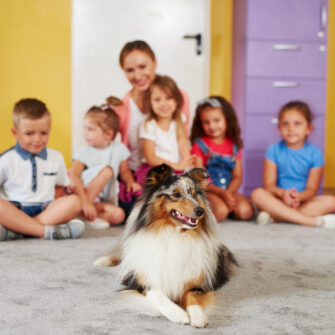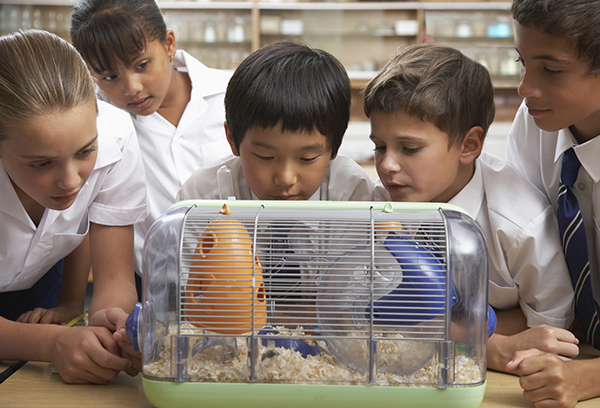
Keep Kids Safe Around Animals at School

This school year, add staying healthy around animals to the lesson plan!
Children can learn a lot from animals. Bringing animals into the classroom can be educational and fun for kids, but it’s important to make sure they stay safe and healthy while they’re learning. Certain animals aren’t appropriate for school settings because they may be more likely to spread germs, or they might not have the right temperament. Children, especially children under 5 years of age, are more likely to get sick from germs animals can sometimes carry. If you plan to have an animal in your classroom, whether it’s a class pet or for a hands-on learning experience, be aware of the risks and how to prevent illness. You can help kids enjoy and learn from animals while staying healthy.
Animals can spread germs!
Animals can sometimes carry germs that can make people sick, even if they look clean and healthy. You don’t have to touch an animal to get sick – the germs can spread to cages, bedding, and wherever animals roam.
There have been disease outbreaks from hatching eggs and chicks in the classroom and from contaminated animal products used for hands-on learning, such as owl pellets for dissection. Salmonella and E. coli are common germs spread by animals.
How to prevent germs from spreading in the classroom:
- Check local regulations, as well as school policies, before bringing animals into schools.
- Do not bring reptiles, amphibians, poultry, rodents, or ferrets into schools, daycare centers, or other settings with children under 5 years of age.
- Adults should always supervise children’s contact with animals. Never allow children to put their hands or objects (including pacifiers) in their mouth while around animals.
- Create specific areas for interaction with animals. Do not allow animals to roam freely around the classroom, especially in areas where food or drink is prepared, served, or eaten.
- Do not dissect animals or other animal products where food for people is prepared, served, or eaten. Thoroughly clean and disinfect surfaces used for dissection.
- Consult with parents to determine special considerations for children who have allergies, asthma, or other illnesses.
- Do not bring the pet or its supplies to areas where food is prepared or eaten.
- Do not kiss or hold the pet close to their face. Let kids show love in other ways, like giving the pet a treat.
- Wash your paws! Students should wash their hands with water and soap right after handling animals, their food, or their habitats (for example, cages, terrariums, aquariums, water bowls, and toys).
- When around animals, also wash hands after removing dirty clothes or shoes, before eating and drinking, and before preparing food or drinks.
- Adults, including teachers, should always supervise handwashing for young children.
- Use hand sanitizer if running water and soap are not available. If you only use hand sanitizer, be sure to wash your hands with soap and water as soon as possible.
- Do not clean tanks, feeders, water containers, and other equipment in sinks or areas where food is prepared, served, or eaten.
- Clean and disinfect all areas where animals have been.
- Check that animals are healthy before bringing them into school.
School staff should…
- Supervise children closely around animals.
- Create specific areas for animal interaction.
- Consult with parents before bringing animals into the classroom in case of allergies, asthma, or other illnesses.
- Clean and disinfect all areas where animals have been.
- Avoid bringing reptiles, amphibians, rodents, or ferrets into settings with children under 5 years old.
For more information click here.
For more resources to educate children in the classroom please visit our Resource Center and see additional links below,
- One Health Coloring Pages in English | OSE
- One Health Coloring Pages in Spanish | OSE
- Stay Healthy Around Animals Coloring Book | CDC
- One Health Coloring Book | CDC
- Wash Your Paws! Class Pet Poster | CDC
- Information on Cleaning and Disinfecting Pet Supplies | CDC